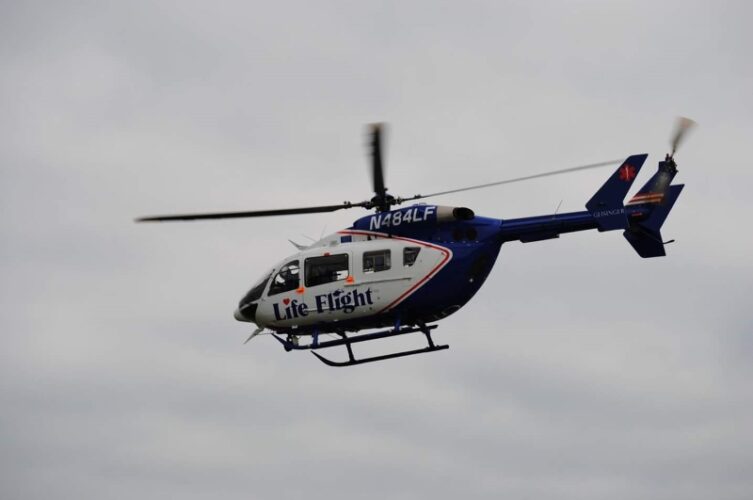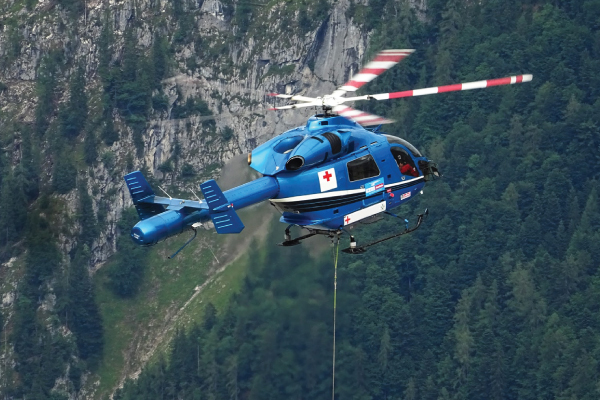Today, we’re going to talk about a partnership that has saved countless lives: air ambulances and trauma care. When it comes to critical medical emergencies, time is of the essence, and that’s where air ambulances truly shine. These highly specialized aircraft are equipped with state-of-the-art medical equipment and staffed by a team of skilled professionals who can provide life-saving treatment even before reaching the hospital. On the other hand, trauma care facilities, with their expertise in handling severe injuries, are imperative for ensuring the best outcomes for patients. Together, air ambulances and trauma care form a dynamic partnership that has revolutionized emergency medical services and transformed the way we save lives in critical situations. So, let’s delve into this life-saving partnership and understand how it works.
Air Ambulances and Trauma Care: A Lifesaving Partnership
Welcome to our comprehensive article on air ambulances and their role in trauma care. In emergency situations, timely medical response can often mean the difference between life and death. That’s where air ambulances come into play, providing a crucial lifeline to those in need of immediate medical attention. In this article, we’ll delve into the importance of timely medical response, the different types of air ambulances, the medical equipment and qualified staff on board, dispatch and coordination, patient transfers, and the various advantages and challenges in utilizing air ambulances in trauma care.
The Importance of Timely Medical Response
When it comes to medical emergencies and traumatic incidents, time is of the essence. The concept of the “Golden Hour” emphasizes the critical need for a swift response within the first hour after a serious injury or accident. During this window, prompt medical intervention can significantly increase the chances of survival and minimize complications or disabilities.
Research has shown that timely medical response, facilitated by air ambulances, can greatly impact patient outcomes in trauma cases. Increased survival rates, reduced complications, and improved long-term prognosis are just a few of the benefits associated with providing swift medical care.
What are Air Ambulances?
Air ambulances are specially equipped and staffed aircraft that are designed to provide rapid medical transportation for patients in critical conditions. They are capable of transporting patients both within a region (inter-hospital transfers) and over long distances, ensuring that patients receive expedited medical care at specialized facilities.
Throughout history, these air ambulances have gone by different names and taken various forms. Today, they are commonly known as helicopters, fixed-wing aircraft, or rotary-wing aircraft, depending on their configuration and capabilities. Regardless of the type, their ultimate purpose remains the same – to deliver emergency medical services efficiently and safely.
The Role of Air Ambulances in Trauma Care
Air ambulances play a vital role in trauma care. Their ability to rapidly transport medical personnel and equipment to the scene of an accident or a remote area can mean the difference between life and death. Here are some key ways in which air ambulances contribute to trauma care:
- Rapid Medical Transportation: Air ambulances facilitate the swift transportation of critically injured patients from the scene of an accident or a remote area to specialized medical facilities. The speed at which they can travel helps to minimize delays and ensure that patients receive the urgent care they need.
- On-scene Resuscitation and Stabilization: Air ambulances are equipped with advanced life support equipment and staffed by highly skilled medical professionals who are trained to provide on-scene resuscitation and stabilization. This immediate medical intervention can be crucial in saving lives and preventing further deterioration prior to transfer.
- Transportation to Specialized Facilities: In many cases, patients require specialized care that may not be available at the initial point of care. Air ambulances bridge this gap by providing rapid transportation to hospitals or trauma centers that are equipped to handle complex and severe injuries. This enables patients to receive the most appropriate and timely treatment.
- Inter-hospital Transfers: Air ambulances also play a key role in transferring patients between hospitals. When a patient’s condition requires a higher level of care or specialized interventions, air ambulances can transport them quickly and safely to the appropriate medical facility. This helps to optimize patient outcomes and ensures that they receive the necessary treatment without unnecessary delays.
- Access to Remote Areas: Air ambulances are particularly instrumental in providing medical assistance in remote and inaccessible areas. Whether it’s a high-altitude mountain rescue or a remote island emergency, air ambulances have the capability to reach these hard-to-access locations and provide life-saving medical interventions.
Types of Air Ambulances
Air ambulances come in different forms, each designed to cater to specific medical needs and transportation requirements. Here are the main types of air ambulances:
- Helicopter Air Ambulances: Helicopters are versatile and widely used air ambulances due to their ability to land in smaller areas, such as accident scenes, helipads, or even some urban locations. They offer a quick response time and can carry out on-site medical procedures.
- Fixed-Wing Air Ambulances: Fixed-wing aircraft, such as airplanes or jets, are often used for longer-distance transfers or inter-hospital transports. These air ambulances have a larger medical cabin capacity, enabling the transport of patients in critical conditions along with a specialized medical team and advanced equipment.
- Rotary-Wing Air Ambulances: Rotary-wing aircraft, such as tiltrotor or tilt-wing aircraft, combine the capabilities of helicopters and fixed-wing aircraft. They can take off and land vertically like helicopters, while also providing the efficiency and speed of a fixed-wing aircraft. These air ambulances are useful for accessing remote locations or areas without adequate landing facilities.
Medical Equipment on Air Ambulances
Air ambulances are equipped with a range of medical equipment to provide comprehensive care during transport. The type and level of equipment vary depending on the specific needs of the patients and the aircraft’s capabilities. Here are the main categories of medical equipment commonly found on air ambulances:
- Basic Life Support Equipment: This includes equipment such as stretchers, oxygen administration devices, basic airway management supplies, splints, and bandages. These essential tools are used to stabilize patients and provide initial care during transport.
- Advanced Life Support Equipment: Air ambulances also carry more advanced equipment to support critical patients. This may include cardiac monitors, defibrillators, ventilators, infusion pumps, and other advanced monitoring and resuscitation devices. These tools enable the medical team to provide intensive care during transport.
- Specialized Medical Equipment: Depending on the specific needs of the patient, air ambulances may also be equipped with specialized medical equipment. This could range from neonatal incubators and isolettes for transporting premature babies to extrication equipment for handling trauma cases.
- Pharmaceuticals on Air Ambulances: Medications and pharmaceuticals are an essential component of air ambulance services. These include pain medications, anti-inflammatory drugs, antibiotics, sedatives, and other emergency medications. Having a well-stocked pharmacy on board ensures that patients receive the appropriate medications during transport.
Qualified Medical Staff on Air Ambulances
Air ambulances are staffed by highly trained medical professionals who have specialized skills in pre-hospital care and critical care transport. The composition of the medical team may vary depending on the aircraft type, patient needs, and the distance to be traveled. Here are the common roles filled by qualified medical staff on air ambulances:
- Flight Paramedics: Flight paramedics are often the primary responders on air ambulances. They are specially trained paramedics who provide advanced medical care, including administering medications, managing airways, performing procedures, and monitoring vital signs during transport.
- Flight Nurses: Flight nurses are registered nurses with additional training in critical care and aviation medicine. They work closely with the paramedics to provide comprehensive care to patients during transport. They are responsible for tasks such as medication administration, patient assessment, and coordination with receiving facilities.
- Doctors on Air Ambulances: In some cases, air ambulances may have a doctor on board, especially for long-distance transfers or critical patients requiring advanced interventions. These doctors are typically specialists in emergency medicine, anesthesiology, or critical care and provide additional expertise and oversight during transport.
- Training and Certification: The medical staff on air ambulances undergo rigorous training and certification specific to aeromedical transport. This includes advanced life support courses, aviation safety training, and ongoing professional development to ensure they are equipped with the necessary skills and knowledge to provide optimal care.
Air Ambulance Dispatch and Coordination
Efficient dispatch and coordination are crucial elements of air ambulance operations. A well-coordinated system ensures that air ambulances can be rapidly deployed and safely navigate to their destination. Here are some key aspects of air ambulance dispatch and coordination:
- Emergency Dispatch Centers: Air ambulance services are often coordinated through dedicated dispatch centers, which receive emergency calls, assess the severity of the situation, and determine the appropriate response. These centers coordinate with local emergency services and ensure that air ambulances are dispatched promptly and efficiently.
- Communication and Information Gathering: Communication is vital for effective coordination. Dispatch centers communicate with requesting parties, medical facilities, and air ambulance crews to relay critical information, assess patient needs, and determine the most suitable aircraft and medical crew for each mission.
- Navigating Airspace and Flight Planning: Air ambulance crews work closely with air traffic controllers and flight planning departments to ensure safe and expedited flight paths. They consider factors such as weather conditions, airspace restrictions, and the distance to be traveled to optimize transport time and ensure safe operations.
Transferring Patients Safely
Safety is paramount when it comes to transferring patients via air ambulances. Here are some key considerations and procedures in ensuring the safe transport of patients:
- Patient Assessment and Preparation: Prior to transport, the medical team performs a thorough assessment of the patient’s condition to determine their stability and any specific care requirements during the flight. These assessments help in determining the appropriate medical interventions, medication administration, and the level of medical monitoring needed.
- Air Ambulance Safety Measures: Air ambulances adhere to strict safety protocols to ensure the well-being of patients and the medical crew. This includes secure cabin fixtures, patient restraints, and specialized equipment storage to prevent movement during flight. Air ambulances also undergo regular maintenance and inspections to ensure their airworthiness.
- Ensuring Patient Comfort: The medical team strives to maintain the comfort and well-being of patients throughout the journey. This includes managing pain, providing appropriate positioning, and addressing any anxiety or discomfort the patient may experience during the flight.
- Managing Critical Patients: For critically ill or injured patients, additional measures are taken to ensure their stability during transport. This may involve advanced life support interventions, continuous monitoring of vital signs, and close coordination with receiving facilities to ensure a seamless transfer of care.
Advantages of Air Ambulances in Trauma Care
Air ambulances offer significant advantages in trauma care, particularly in time-sensitive and critical situations. Here are some key benefits of utilizing air ambulances:
- Rapid Response Time: Air ambulances can reach a patient’s location swiftly, overcoming obstacles such as traffic congestion and difficult terrain. This quick response time facilitates early medical intervention, increasing the chances of survival and improved patient outcomes.
- Specialized Expertise: The medical professionals on board air ambulances have specialized training in critical care and pre-hospital medicine. Their expertise enables them to provide advanced medical interventions and treatments, ensuring that patients receive the highest level of care during transport.
- Time-sensitive Transportation: In certain cases, such as organ transportation or time-critical medical interventions, air ambulances excel in providing swift transportation. Their ability to cover long distances quickly facilitates timely access to specialized treatments and facilities.
- Access to Remote Areas: Air ambulances can reach remote and inaccessible areas that may be challenging for ground transportation. By providing medical assistance in these locations, air ambulances bridge the gap in healthcare access and ensure that patients in remote areas receive timely and appropriate medical care.
Challenges and Considerations
While air ambulances offer numerous advantages in trauma care, there are also challenges and considerations that need to be addressed. Here are some key factors to be mindful of:
- Weather Limitations: Adverse weather conditions, such as heavy rain, fog, or wind, can hinder air ambulance operations. Safety protocols dictate that flights are often grounded during inclement weather, which can delay critical medical interventions and transportation.
- Patient Eligibility: Not all patients are suitable for air ambulance transport. Factors such as patient stability, medical condition, and the availability of appropriate medical interventions during the flight need to be carefully assessed to ensure the safety and well-being of the patient during transport.
- Legal and Licensing Requirements: Air ambulance operations are subject to regulatory requirements and licensing standards. Compliance with aviation safety regulations, licensing of medical personnel, and adherence to legal and ethical guidelines are crucial considerations in the provision of air ambulance services.
- Insurance Coverage: Air ambulance services can be expensive, and insurance coverage may vary. It is important for patients and their families to understand the potential costs involved and assess their insurance coverage to avoid unexpected financial burdens.
- Ethical Considerations: Providing care in high-stress and time-critical situations raises ethical considerations. Medical professionals on air ambulances must navigate complex decisions regarding patient prioritization, informed consent, and the administration of medical interventions in challenging circumstances.
In conclusion, air ambulances play a crucial role in trauma care by providing rapid medical response and timely transportation to patients in critical conditions. Their ability to deliver qualified medical staff and specialized equipment directly to the scene of an accident or remote area significantly improves patient outcomes. While challenges and considerations exist, the advantages of air ambulances in trauma care cannot be overstated. This lifesaving partnership between air ambulances and trauma care continues to save countless lives, making a profound impact on emergency medicine.



